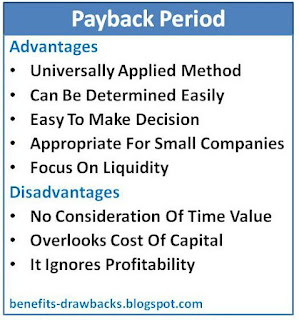Advantages Of Profitability Index (PI)
Main benefits or advantages of using profitability index method of evaluating investments can be explained as follows:
1. Widely Used Technique
Profitability Index (PI) is very easy to calculate. So, it is common and widely used technique to evaluate different investment proposals.
2. Time Value Of Money
PI assumes that money received today is far valuable than the exact amount of money of future. So, it highlights the time value of money and evaluates the present value of money of future cashflows.
3. Easy To Make Decision
It is simple and easy to find out the suitable investment project with the help of profitability index method. Project with higher PI is accepted and others are rejected.
4. Rate Of Return
Profitability index ascertains accurate rate of return of the project which is important to know the profitability of the project.
Also Read:
Also Read:
5. Profitability
PI focuses on the profitability of the firm. It also considers the risk factor. It helps to maximize the value of the firm
Disadvantages Of Profitability Index (PI)
Major drawbacks or limitations of using profitability index method can be expressed as follows:
1. Estimation Of Cost Of Capital
It is difficult to estimate cost of capital and interest rate or discount rate to determine the profitability index of the project.
2. Comparison
It is difficult to compare the projects having different estimated working life.
3. Incorrect Decision
There is a chance of drawing incorrect decision while comparing mutually exclusive capital projects.
















